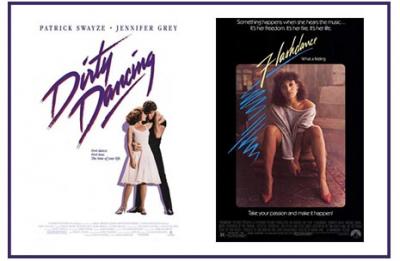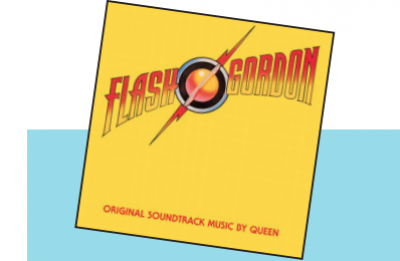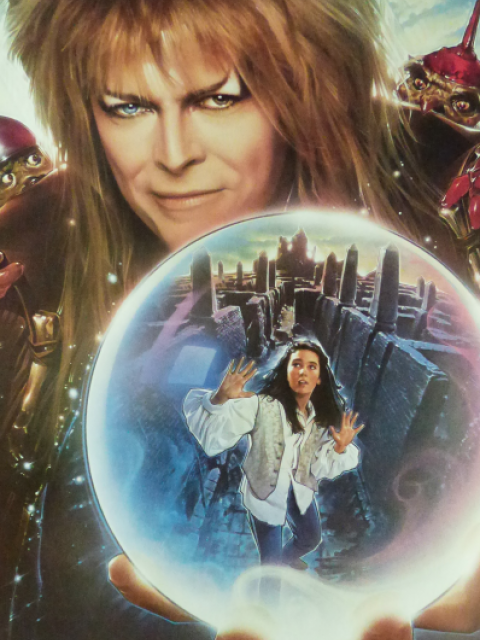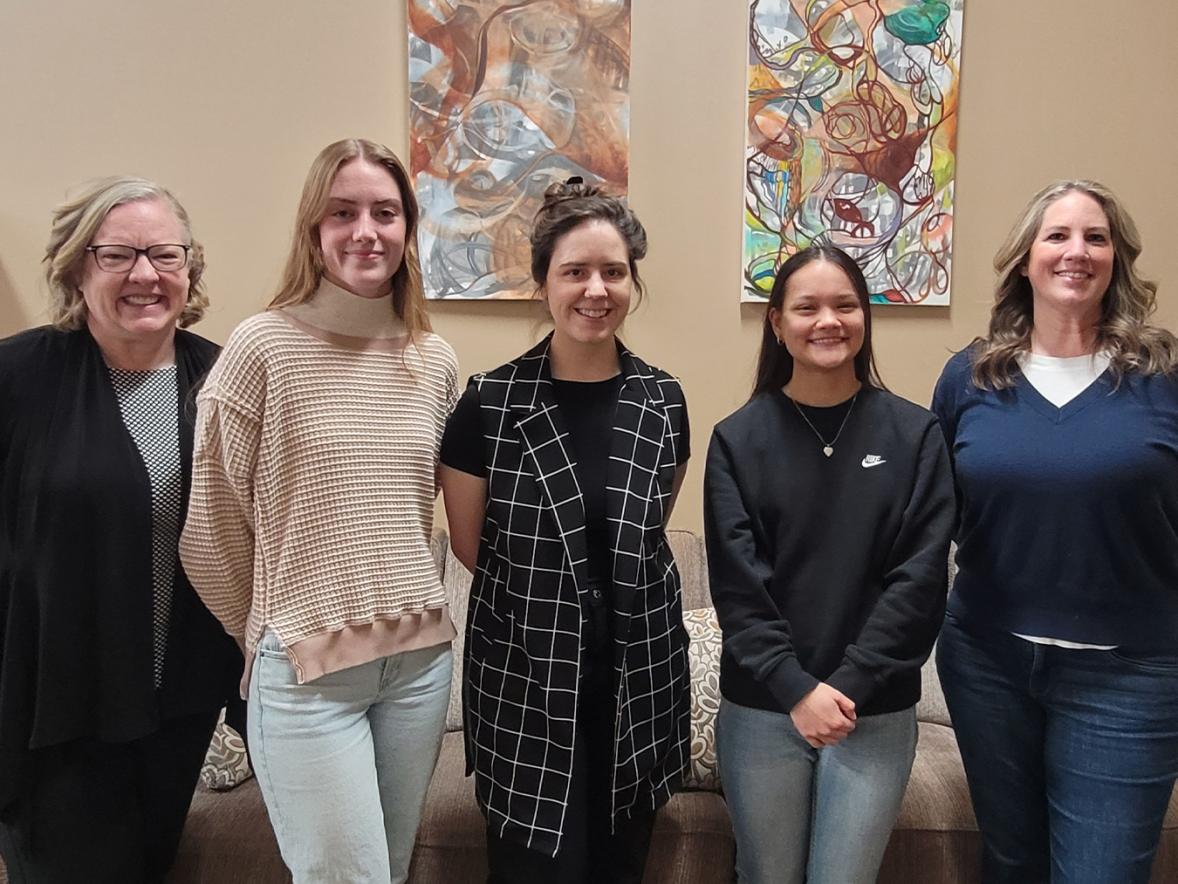Michael Heagle, professor in the Animation and Digital Media program at UW-Stout, loves and lives for movies. The only thing he likes as much as movies is music.
“Put those together with a sense of humor and I’m in heaven, man,” he said.
After college, Heagle moved to Los Angeles where he happened across a copy of Michael Weldon’s Psychotronic Encyclopedia of Film. As a result of reading that book, Heagle made his first feature film and never looked back.
With his passions at heart and facts on hand, Heagle self-published Synthesizers and Saxophones in which he explores the story that brought 1980s pop music and movies together. Heagle sees the book as pure, unscholarly entertainment, more like the 80s movies and the decade itself.
Looking back on his discovery of Weldon’s book, Heagle hopes somebody stumbles onto his book someday.
“I hope it encourages someone to see some movies that they wouldn’t otherwise and become inspired to make their own thing the same way I did,” he said.

It All Starts Here
Heagle’s fondness for breakdancing films led him to watch Breakin’ and Breakin’ 2: Electric Boogaloo.
“I was listening to the soundtracks, seeking out posters and lobby cards and autographs and other memorabilia,” he said. “But I found there wasn’t really a book on the subject; my usual go-to for collecting on a movie.”
So, Heagle asked himself, “How hard could it be?” He wrote an article about the movies and added a review on Beat Street, another film of the genre.
“Soon I found there were even more of these that I hadn’t heard of, and the book escalated from there,” Heagle explained.

Cherry-Picking and Other Challenges
Needing a practical approach, Heagle set criteria for his research. By ‘cherry-picking’ his material, he limited the number of films he covered. This saved time and energy, too, as each movie review in the book took a day or two to write.
“I’d pick out a few movies to work on for the week, watch them with a notebook and jot some ideas down, then take a day to research the music and write the chapter,” he explained.
Heagle found it challenging that every piece of research led to another film. He quickly realized he had seen almost nothing from the 1980s except the hits and the occasional B-movie.
“It was a great revelation,” he said. “The knowledge that there were still hundreds of bad and hilarious things I hadn’t seen. That was like discovering a $100 bill in a jacket pocket.”
Another challenge Heagle faced was working only with secondhand sources. He hopes his next project will have firsthand interviews.
“Being outside the entertainment industry and working out of the Midwest instead of LA makes it harder, too,” he said.

The Great Equalizer
In his introduction, Heagle wrote, “Music was the great equalizer, crossing race and class, region and religion.” He further explores this philosophy when he covers John Hughes' The Breakfast Club.
In a scene cut from the film, Allison (Ally Sheedy) discovers an LP of Prince’s 1999 in a teacher’s locker. “You know what this means? They’re human,” she states.
This would have been a pivotal moment for the students who felt a rift between themselves and adults, except Carl the Janitor who seemed the bridge between worlds. But, as the scene was cut, the bridge was lost, and the equalizer broken.
As a filmmaker, Heagle almost never shoots anything he doesn’t use.
“The idea of losing a scene like this confounds me,” he stated. “The typical reason to cut a scene boils down to economics. Films that are 90 minutes can play more often than a two-hour one, and thus make more money in a day.”
Heagle explained one of the themes of the film is the adults universally don’t understand the teens. The lack of the scene with the discovery of the LP simplifies and clarifies that theme nicely.

The Power of Music and Dance in the 1980s
Like music, dance is a universal element that brings people together. Movies from the 1980s were packed full of dance choreographed to pop music. Two movies Heagle covers in Synthesizers and Saxophones set major records for dance flicks.
But where would Dirty Dancing and Flashdance be without their music? And could the music have survived without the movies?
Heagle explained the original songs from Dirty Dancing, including Academy Winner-winner “(I’ve Had) The Time of My Life”, did little on the charts. But when the movie exploded on the scene, the songs burst to life.
“You can’t imagine them separated,” Heagle said. “But there’s no other explanation why a generation of teenage girls in 1987 would need an album with 60s music on it. My wife had the cassette. She said the songs were poppy, classic, timeless, fun to listen to, but had a slight sexy edge to them.”
In the case of Flashdance, the turntables have turned. Its director and the studio had their doubts about the film’s success. But the LP was the first record to knock Michael Jackson’s Thriller off the top spot in the charts. This statistic speaks to the power of the soundtrack. It’s hard to even play the movie in your head without tapping your foot to the heavy beat of Alex’s ending-scene audition.
“Industry folks argued whether the album sold the movie, or the movie sold the album. The truth was: neither survived without the other,” Heagle stated. “Movies and music are immeasurably dependent on each other. They’re inseparable. Imagine Harry Potter without the John Williams theme.”

Queen and Bowie: Surefire Hits
In his book, Heagle wrote, “If one needed a reason to write a book such as this, it would be Queen, who prove the thesis – that rock music and 80s films are inseparable – with the one-two punch of Flash Gordon and Highlander.”
The epic soundtracks of these classics are bound to the musical genius of Queen.
“Like every kid of that era I loved Star Wars, but somehow Flash Gordon spoke to me even more; the operatic Freddie Mercury vocal, the soaring Brian May guitar, the satin jumpsuits, and art-deco models,” Heagle reminisced. “It was the sound of my adolescence. Queen’s music for Flash Gordon – it was the first cassette I ever got. I had that thing memorized. And it’s still some of my favorite music, and people working today in that retro sound still capture some of the magic of it.”

Jim Henson’s Labyrinth is another case of a soundtrack created nearly entirely by one artist – who also happened to star in the film: David Bowie.
“Putting the lead villain and all the songwriting and performing in the hands of David Bowie was a leap of faith, but a pretty surefire one,” Heagle said.
But this concept of putting all one’s faith in one artist for a movie’s soundtrack is uncommon in today’s flicks.
“Some recent films have used rock bands as the sole composers,” Heagle noted. “Daft Punk for Tron Legacy and Mad Max Fury Road by electronic composer Junkie XL. Interestingly, they’re both continuations of 80s films.”
As a filmmaker, Heagle understands the risks involved in every aspect of a production.
“Every film is a gamble in casting every single role. All it takes is one sour note to tarnish the whole project, so there is a huge amount of trust at the minute, individual level,” he said. “Director Luc Besson (The Fifth Element) likens filmmaking to mining for diamonds. There might be a huge enterprise involved in cutting away the side of the mountain, but at the end of the process it’s one person with a hammer and a chisel prying the diamond from the rock.”
According to Heagle, that’s the inner circle of filmmaking – the director, camera person, sound person, script supervisor, and actor, just five people trying to extract the shiny stone out of the material while the rest of the crew holds their breath.
Future Endeavors of Past Horrors
For his next literary project, Heagle plans to write a book on the horror films of 1988. Following the successes of films like Nightmare on Elm Street, there were around 70 horror films released that year.
“I was in college and obsessed with horror movies around that time, so it’s another dip in the well of nostalgia for me,” Heagle said.







